Imagine if one company held all the power over your income every month. That used to be my reality when I had a day job.

This is why I choose to publish wide across multiple platforms and generate multiple streams of income. Because what if that one company changes the rules?
In today's article, Ashley Kimler outlines some options for selling ebooks and print direct from your author site.
Now that you’re an author, book sales are your business. If you want to be successful, you have to step into the realm of a true entrepreneur.
If you’re only processing book orders on one channel, you’re isolating yourself from an entire universe of opportunity.
Here are some tips on how you can setup automation processes to efficiently manage multiple sales avenues for your book(s).
Why you shouldn’t just sell on Amazon or B&N
When making wise decisions, you first need to know the facts. While many self-published authors take the easy road, selling solely on Amazon, Barnes & Noble, and or through retailers who have deals worked out with their printer, this isn’t always the best decision.
If you look at commerce as a whole, those who sell on multiple channels have 91% greater customer retention than those with a single platform for processing orders. The more sales channels you open, the higher your odds of building a solid fanbase.
But, you can’t just offer your book on a million different websites without a robust sales “platform.” You need a plan that automates and integrates multiple fulfilment channels and makes it easy to keep track of your inventory, orders, and delivery. It shouldn’t matter where your orders come from. Here is some advice to streamline your operations.
Do you need an author/ book website?
Some writers have a book or author website, and some do not. But, especially if you’re self-published, you need to build a business around your book if you want to be successful – a website is a powerful tool for making this reality.
A book or author website delivers the following perks:
- Sell books and ebooks, cutting out the middleman.
- When selling on or offline, use your website dashboard to fulfil orders.
- Integrate your other sales platforms for a unified view of your sales and inventory.
- Host an author blog for content marketing.
- Connect your social media accounts for fans to interact.
- Run unrestricted promotions.
- Cross-promote with other authors and publications.

[Note from Joanna: If you want to build your own author website, check out my tutorial here.]
Integrate your software platforms for a unified view of order fulfilment
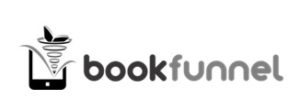
Unfortunately, I have not been able to find a plugin or addon for any platform that connects a book printer (Createspace, IngramSpark, etc.) directly to an eCommerce website dashboard (Shopify, WooCommerce, etc.). But, you can connect your Amazon FBA account to Shopify with one of the easy-to-install add-ons and process hard copies through their service.
How to apply this in practical terms:
Remember: each stage of order fulfilment should be automated.
- Receiving
- Printing
- Picking, packing, shipping
- Tracking and confirmation
The fact that integration and automation are central to a simple omnichannel book sales strategy is apparent. Now, you need to know the practical applications.
Keep in mind that you could be selling offline, on your website, and mass sales channels of your choosing. In each case, combine the inventory, order, and fulfilment processes.
Inventory Management
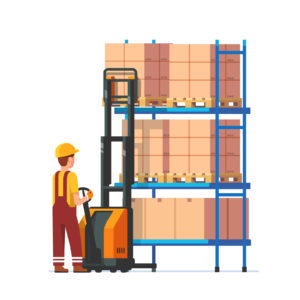
Print-on-demand
If you have established a print-on-demand relationship with a printer, your items will automatically be offered on any sites your printer has a relationship with and the shipping details will be worked out. Drop shipping your own orders will take longer to deliver than sales through, say, Amazon. The perk is that you will not need to track your inventory.
[Note from Joanna: I use Createspace and IngramSpark for print-on-demand and don't do warehousing or shipping.]
Bulk order books
Whether or not you use a print-on-demand service, all bulk purchases will require that you store your books somewhere. Depending on your sales volume, you may need a warehouse rather than just storing books in your home office.
Be sure that any warehouse you use can work seamlessly with your eCommerce platforms, your printer, and your inventory management software.
Order Processing/ Receiving
As mentioned above, you can use your website dashboard to process orders on and offline. Online orders, when set up correctly, should be automatically processed.
Offline orders, however, will be placed somewhat manually. Be sure to use a payment system that tracks all orders holistically.
Shopify is an excellent choice for an eCommerce platform because you can create multiple user accounts (in case more than one salesperson will process orders on or offline), their portable credit card reader integrates sales on and offline, and an abundance of add-ons and integrations make it simple to add new sales features with the click of a button.
Here’s how to create multiple user accounts in Shopify:
1. Login to the Shopify dashboard.
2. Click “Settings” in the lower left corner.
3. From the Settings screen, choose “Account.”
4. Scroll down to “Accounts and Permissions” and click “Add Staff Account.”
5. Enter the first name, last name, and email address of your salesperson, choose permissions and send an invitation to login.
After this, anyone added to your staff will have the ability to manually process online and offline orders.
Delivery and Fulfillment
Perhaps my least favorite aspect of online book sales is shipping and delivery. With a transportation management system (TMS), you can automate the entire fulfilment process, from order processing to delivery. You can even rate multiple carriers (FedEx, UPS, etc.), in real time, to make the best selection based on the location of the recipient. Shipping software will simplify and optimize fulfilment operations while saving on expenses.
[Of course, if you use print-on-demand, Ingram Spark / Amazon do the fulfilment, so you don't have to do a thing!]
Final Thoughts
Selling your book on multiple channels is a process that can boost your success. If you automate as many of your processes as possible and integrate your systems to work with one another, your operations become simple.
To get started, use the advice above as a springboard.
Do you publish your books on all available channels? What about selling direct from your website? Please leave your thoughts below and join the conversation.

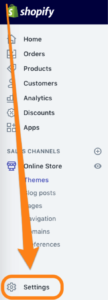
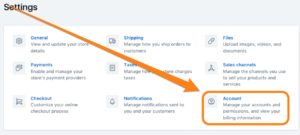


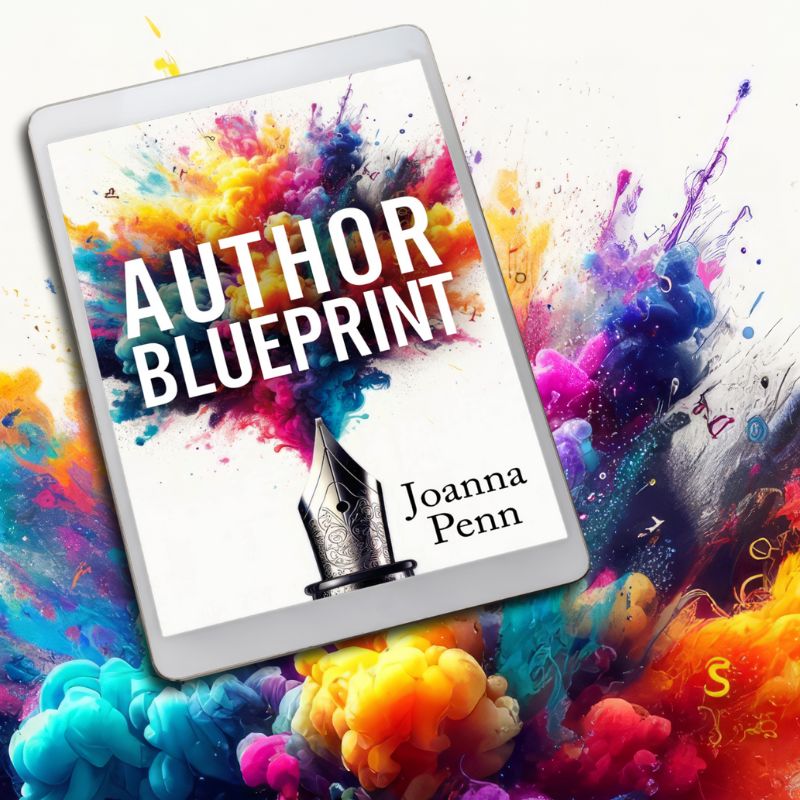
This is very useful for self publishing authors. I will try to build a Author site in near future.Thanks for sharing.
Way back in 2012 I started doing Direct Sales of books through Gumroad. Though I absolutely love the platform, I ended up stopping any booksales in early 2014. The reason was that the investment of time and money to do direct sales did not have enough return to make it worthwhile.
There were several problems. 1) Driving traffic to my direct sales was both time consuming and not very effective. 2) In terms of ebooks, supporting the downloads was the killer to ROI. The average reader had no idea how to side load, and those who did would rather not. 3) I did not even contemplate POD book sales because of all the issues you mentioned.
There are some solutions to these problems today. For ebooks I can partner with BookFunnel for the download support. That’s huge and BookFunnel’s reputation with readers is very good. However, the problem of driving traffic is still there. I am considering trying again in 2018, but more likely the shopping will be through WooCommerce on my website. Haven’t yet chosen the bank processor. It’s looking like Payhip may be the only one to handle both U.S. Taxes and VAT for other countries. I still will not attempt to do print sales direct.
Does anyone have a strong direct sales program already? If so, what do you use to drive traffic to that channel along with Amazon, Kobo, B&N, Apple, Google, etc. For the most part readers choose the vendor they always use and know.
Things have changed since 2014 for sure, especially if you have a higher traffic site. That’s the key. If you have an audience and some traffic, then people start to buy that way. You can also do exclusives with direct sales. I’m using SELZ.com and find they very good. I don’t do print direct either – too much of a pain 🙂
Joanna, you neglected to mention Lulu Press, also a POD service. I have used them since 2012 for both eBooks and physical books, all without a hitch. They also offer Global Distribution, so my books are available in more places, like Amazon. But I will consider adding my books to sites like Smashwords and such; B&N uses ePub software that won’t pick up on the foreign words in my novel, so I had to skip using them. I’d like to be able to sell directly from my site once I upgrade my WP blog to a website. Good article. Thanks.
Glad you found the article useful. Lulu actually has a warning from the Alliance of Independent Authors – https://selfpublishingadvice.org/allis-self-publishing-service-directory/self-publishing-service-reviews/#listing-L – so I can’t recommend them.
I have self-published my novel through Lulu & used their distribution option which was excellent. I found the profits to be much higher than through Amazon and they have a good bulk buy option – better than other platforms. I know many people who publish with Lulu and have yet to hear a negative story.
I found the ALLi review a few months ago and was shocked. I completely disagreed with it. Plus their review is dated May 2014 – and you, yourself have commented how much has changed in the last 5 years alone in publishing so a regular update should be conducted (I have messaged them about this).
Yes, I publish as wide as I can. But it’s still annoying that when I look at one of my titles on Amazon and scroll to the ‘Customers also bought’ part, every single one is a KU title. Thanks for the post Joanna 🙂
I thought that VAT on ebooks in the European Union was a major obstacle that needed to be addressed by anyone thinking of selling directly. I assume the problem still exists even if you’re based in America. Thanks.
I think the EU changed their mind on Vat on ebooks last year
Yes, there is VAT on ebooks in the European Union but the online payment sites help you to sort that out. OR/ you can do what I do which is not sell into the EU and avoid the hassle altogether – you can deselect countries on the SELZ dashboard, not sure about other platforms. Once the threshold comes in, which should be anything under EUR20,000 doesn’t attract VAT, then I will sell there again, but most of my direct sales are from the US anyway.
I’m definitely going wide (from the beginning as I just said on twitter on another of your articles) and I’m definitely having my own site, but for me I think direct shipping is a step too far. I shall do sales through my site via affiliate links with amazon (or kobo or whoever)
The only proviso to this being if I do any high value or bespoke stuff ( I turn and carve and one of the things I’m getting into turning is pens, so I might offer bespoke pens for writers through my site if I go down the non fiction route and am developing a writer’s as readers market – I did say I wanted to be you)
(May be next Xmas I’ll send you a bespoke “creative pen” 😀 )
Peter – I’m also a pen-turner (mostly gifts) and working on my first novel. It’d be great to connect – I’m at garyklinecc on Twitter.
Ashley and Joanna, thank you for the information. I especially appreciate the warnings around the differences between EU and US sales and tax issues.
Thanks to Joanna’s excellent set of YouTube videos on setting up a Author Website and Blog, I have that up and running. I’ll be using BookFunnel to send out exclusives to newsletter subscribers, and am toying with the idea of making e-book sales available through the site as well. This article have given me a lot to consider.
I’ve been using Woocommerce plug-in for WordPress for about 3 years and find it to be everything I need and more. I run preorder campaigns from my website for early print copies, but leave all of my eBook sales on the major stores.
Any advice is good advice. Thank you for this. It will be bookmarked and used as a learning tool.
I really enjoyed this post and found the suggestions useful eg using multi-plaforms, book funnel.
I’m about to release a non-fiction book, and I’m planning to have special discounts and bonus features for bulk purchases.
But how do I get the bulk purchases linked to the print book orders w platforms like createspace and Ingram Spark, without me manually warehousing copies and mailing them off myself?
Thanks in advance, Joanna!
P/s : I really enjoyed your self-publishing book and marketing book. Everything I google something about indie-publishing, I add your name in the search bar, cos I’d trust more of what you’d recommend! Thanks for your contribution!
Glad you find the info useful, Daryl 🙂 IngramSpark links to http://www.Aer.io for bulk discounts, but that’s only available to some sellers in some countries right now. I don’t know how you’d do it otherwise. There is no bulk discount on Createspace that I know of. It’s something I don’t do right now as it’s not easy to achieve with POD. All the best!
Hi Joanna, really appreciate your reply and resource to aer.io . will check it out. Thanks once again for the work that you do.
Thank you so much for this write up. I want to know how does the customer get the print copy of a book they got from your book sales funnel. Let’s say free plus shipping funnel or just a book sales page. How can I link my Optimizepress , clickfunnels or kartra page to a fulfilment service to print and send them the book instead of taking them to amazon.
There is a service that Ingram are doing – aer.io – but it is not ready yet. You can direct people to other online bookstores if you distribute through Ingram.
Most authors who sell print direct, have a stock at home and then post them. Personally, I don’t want the hassle 🙂
Hey! This was really helpful. Is there a way to take orders from your website (shopify or woocommerce) and deliver via print-on-demand Ingramspark?
I believe both Amazon and lulu have plugins for that but I can’t figure out how to automate that process for ingram.
Ingram has Aer.io which does this, but it’s only available in some countries.
I’ve been wide for my ebooks and have three paperbooks coming out. I would like to put them out wide as well and not just through Createspace. Naturally selling from my Facebook/Instagram pages is coming up as options but then the selling from my website as well.
Hope this helps